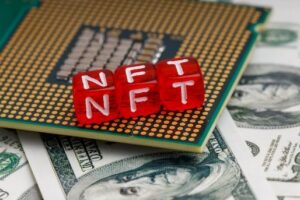What are the design issues in the metaverse ?

There is no sole definition of what metaverse is. However, it can generally be defined as a 3D immersive world, in which individuals can interact through the use of Avatars.
Metaverse is a promising technology with a possibly bright future. In fact, as an immersive world, users can do everything they do in the real world. Since this new technology is winning over millions of users, scores of industries, and companies are beginning to enter this world where they can extend and offer their products and services.
One of the industries that has benefited the most from this new technology is the luxury industry. During the Covid 19 pandemic businesses were severely disrupted.
The metaverse began to appear as a very attractive alternative for companies to continue to exist and have a presence in the marketplace. Many luxury houses have adopted a presence and entered the metaverse where they are able to offer a full immersion of styles, clothes, accessories and peripherals to Avatars. The industry has even started to conduct fashion shows with this new environment. A Metaverse Fashion Week was even created. Besides, the perk of digital fashion is that it allows to create designs which could not exist in the real world, due to technical constraints.
These digital clothes can be sold as NFTs and they can broaden the public of a luxury house, which until now could only touch the masses through more affordable goods such as perfumes and cosmetics. These houses are able – from now on – to attract them with virtual clothes.
With this change, and with the potential in this new world, there are legal issues arising. In fact, we can confirm that there is most definitely a grey area when it comes to this virtual world, especially due to the fact that rules and legal frameworks have not yet been fully developed and adapted to this world. One could even wonder whether specific legal rules should apply to the metaverse.
These questions are all the more relevant for companies to consider seriously considering that Offices have not yet brought clear and precise responses. The metaverse therefore, remains a grey legal world, where enforcing intellectual property rights is an uphill struggle.
Here, we will focus on the questions connected to protection of designs in the metaverse.
The European Intellectual Property Office (EUIPO) has been looking at the metaverse and the issues it raises. In its webinar of September 13, 2022 “Trademarks and Designs in the metaverse”, the EUIPO raises some legal issues that trademarks and designs are facing in the midst of the metaverse.
1. The use of designs in the metaverse
Registering the feature of a product is all the more important for some individuals or companies. When an individual or company is granted design protection, it obtains a monopoly on the exploitation of the design.
This is explained in Article 19 of the Council Regulation (EC) on Community designs which concludes “a registered Community design shall confer on its holder the exclusive right to use it and to prevent any third party not having his consent from using it. The aforementioned use shall cover, in particular, the making, offering, putting on the market, importing, exporting or using of a product in which the design is incorporated or to which it is applied, or stocking such a product for those purposes”.
The EUIPO noted that the term “use” is understood in a broad sense. Therefore, it can include the use of a product on the Internet and thus, in the metaverse. This makes sense since the metaverse is a new “market” for business.
2. The availability of unregistered designs in the metaverse
For a design to be protected, it is essential that it meets the condition of novelty.
Under both European and French law, a design is considered to be new if, at the date of filing of the application for registration or at the date of ownership claimed, no design has been disclosed. According to article 11 (2) of the Council Regulation (EC) on Community designs “a design shall be deemed to have been made available to the public within the Community if it has been published, exhibited, used in trade or otherwise disclosed in such a way that, in the normal course of business, these events could reasonably have become known to the circles specialized in the sector concerned, operating within the Community. The design shall not, however, be deemed to have been made available to the public for the sole reason that it has been disclosed to a third person under explicit or implicit conditions of confidentiality”.
When a luxury house suggests new designs on the metaverse, is it disclosure ?
From a certain perspective, metaverse is a world without any borders where individuals can have access to a bunch of different goods or services.
Consequently, when a company or an individual publishes or exposes a design in the metaverse, the notion of novelty is undermined. So far, there has been no clear answer concerning this question. This question also induces another one: does the uploading of new creations in the metaverse give rise to unregistered design rights in certain territories, such as the United Kingdom?
3. Protection of designs in the virtual world
The last issue raised by the EUIPO concerns the protection of designs in the virtual world.
In fact, one of issues that may be considered is whether products in the metaverse meet the same definition as a product in the real world.
Article 3 of the Council Regulation (EC) on Community designs enounces that a “product means any industrial or handicraft item, including inter alia parts intended to be assembled into a complex product, packaging, get-up, graphic symbols and typographic typefaces, but excluding computer programs”.
A handicraft item is a product made in one-off pieces or in a small series of pieces. It requires the knowledge and skill of one or more craftsmen.
Therefore, some will argue that a product in the metaverse cannot be considered as a handicraft or industrial product.
The EUIPO’s response on this issue does not provide any clear answer due to the lack of case law on the matter. As a matter of fact, it is difficult to say that digital designs are industrial or handicraft items. Nonetheless, the EUIPO accepts digital designs, which are generally classified in class 14-04 of the Locarno classification (such as “icons (for computers)”). Hence, we could completely envision the extension of this class or alternatively, the possibility to add the virtual version of goods in their traditional class (such as class 2 for clothing).
The metaverse is the technology of the moment. However, it raises numerous questions, particularly in relation to designs as to the use of products, their availability and protection within the metaverse. Although the EUIPO gave us some answers as to the use of a product within the metaverse, most of the answers will come with case law.
SEE ALSO …
♦ https://www.dreyfus.fr/en/2022/03/11/metaverse-is-it-necessary-to-register-specific-trademarks-for-protection/



 Over the past decade, the architecture, engineering, construction and Operations (AECO) industry has undergone several developments, particularly in the area of
Over the past decade, the architecture, engineering, construction and Operations (AECO) industry has undergone several developments, particularly in the area of 
 The concept of Metaverse is nothing new. This term was first introduced by Neal Stephenson, in his science-fiction novel “Snow Crash” as a “form of human life and communication in a virtual three-dimensional space through a digital avatar”. As of today, this new world is no more science-fiction but part of our world.
The concept of Metaverse is nothing new. This term was first introduced by Neal Stephenson, in his science-fiction novel “Snow Crash” as a “form of human life and communication in a virtual three-dimensional space through a digital avatar”. As of today, this new world is no more science-fiction but part of our world.
 NFTs, or non-fungible token is one the biggest digital revolutions of our century. An NFT is a digital token operating on a blockchain.
NFTs, or non-fungible token is one the biggest digital revolutions of our century. An NFT is a digital token operating on a blockchain.

 The Palestinian territory is the subject of much controversy, however, trademark rights are not as insignificant as they might seem.
The Palestinian territory is the subject of much controversy, however, trademark rights are not as insignificant as they might seem.
 Off-Chain NFTs are the most common NFTs, as they are cheaper, but the legal protection behind them is much weaker and the risks associated with ownership of the NFT much greater.
Off-Chain NFTs are the most common NFTs, as they are cheaper, but the legal protection behind them is much weaker and the risks associated with ownership of the NFT much greater.
 Just like the Internet at the end of the last century, NFT domain names have seemed to gain popularity among the general public as many people are considering investing in various blockchains. As a new tech tool, the fees that accompany the registration of a domain name on certain platforms can pose a major obstacle for any project to register a Web3.0 domain name. A sudden drop in Ethereum ‘Gas’ fees on the first weekend of July illustrated the public’s enthusiasm for Web 3.0.
Just like the Internet at the end of the last century, NFT domain names have seemed to gain popularity among the general public as many people are considering investing in various blockchains. As a new tech tool, the fees that accompany the registration of a domain name on certain platforms can pose a major obstacle for any project to register a Web3.0 domain name. A sudden drop in Ethereum ‘Gas’ fees on the first weekend of July illustrated the public’s enthusiasm for Web 3.0.
 As the world becomes progressively dependent on technology, the increasing intertwinement of intellectual property and compliance is evident in the business setting. In the face of unprecedented yet inevitable legal transformations, it is crucial to identify the risks and solutions associated with compliance in both the virtual and real intellectual property world.
As the world becomes progressively dependent on technology, the increasing intertwinement of intellectual property and compliance is evident in the business setting. In the face of unprecedented yet inevitable legal transformations, it is crucial to identify the risks and solutions associated with compliance in both the virtual and real intellectual property world.


